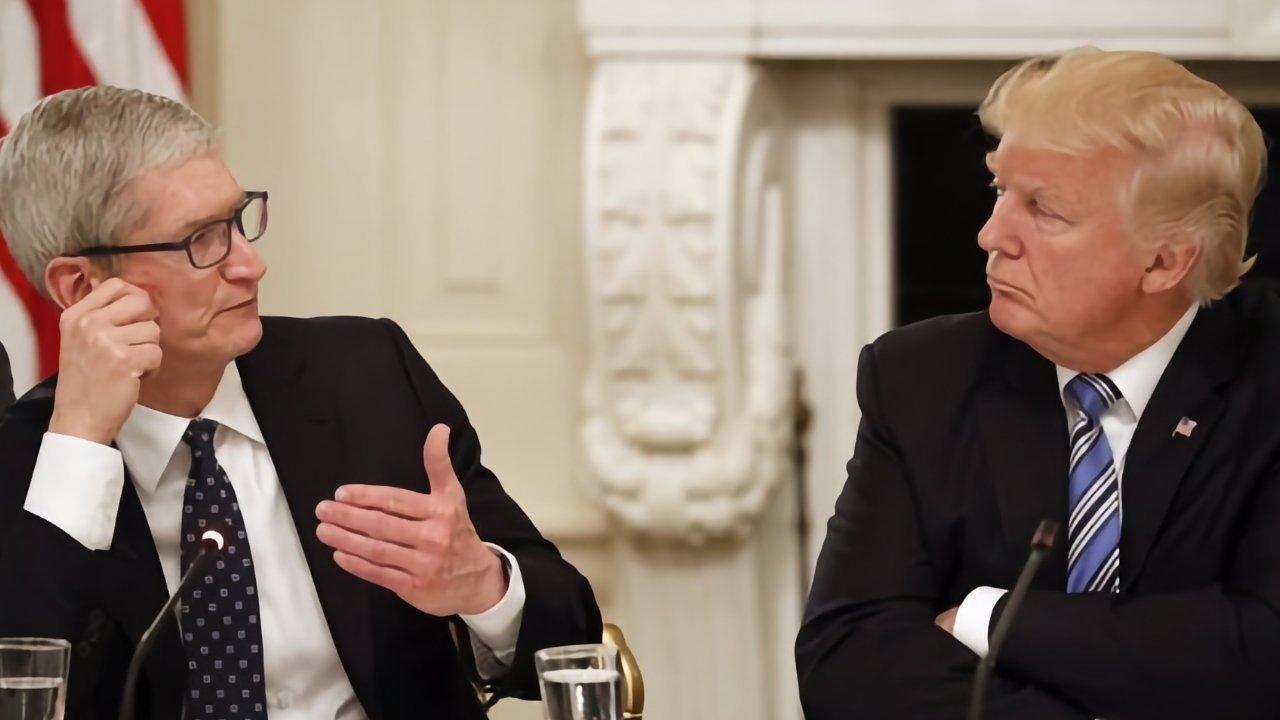President Trump says a 25% smartphone tariff will come into effect by the end of June 2025.
-xl.jpg)
President Trump has revealed that his proposed 25% tariffs on all smartphones coming into the U.S. will take effect in June 2025, well before a single iPhone 17 will ship.
Earlier on Friday, Trump announced that there will be a penalty if Apple does not move manufacturing to the United States. Now, his latest statements serve to clarify that other smartphone manufacturers will be affected, and the President revealed exactly when the new tariffs will be imposed.
According to President Trump, the 25% smartphone will impact not only Apple, but every other manufacturer that imports to the US, in the interest of fairness. The tariffs are scheduled to take effect by the end of June, said Trump.
“When they build their plant here, there’s no tariff,” said the President. “So, they’re going to be building plants there, but I had an understanding with Tim [Cook] that he wouldn’t be doing this.”
“He said he’s going to go to India to build plants.” Trump commented that it was “okay to go to India, but you’re not going to sell into here without tariffs.”
Apple’s shift in manufacturing to India began during the first Trump administration.
Trump says he’s going to tariff all smartphones: “It would be also Samsung and anybody that makes that product, otherwise it wouldn’t be fair. So anybody that makes that product. And that’ll start on I guess the end of June … when they build the plant here there’s no tariff.”
— Aaron Rupar (@atrupar.com) May 23, 2025 at 9:01 PM
During President Trump’s first term in office, Apple was able to secure a tariff exemption, likely as a result of Tim Cook’s negotiating skills. Cook has an established strategy for dealing with President Trump, where their conversations revolve around a singular issue important to Apple.
The company was even able to secure another tariff exemption in April 2025, but it appears as though it will be short-lived.
Even without President Trump’s latest plans for a 25% smartphone tariff, there’s currently an ongoing investigation into the national security implications of semiconductor manufacture, which is expected to conclude with a further tariff.
President Trump believes that iPhone manufacturing can move to the United States, even though the country presently lacks the necessary resources, facilities, and low-cost skilled labor required for such an endeavor. Commerce Secretary Howard Lutnick made an equally bizarre claim that Apple just needs robot arms for U.S. iPhone manufacturing to become a reality.
However, iPhone chip-maker TSMC’s US manufacturing efforts are a whole five years behind its Taiwan operations, indicating that the latest Apple chips likely won’t be made in the United States for the foreseeable future. Probably close to a decade.
During Apple’s last earnings on May 1, CEO Tim Cook revealed that Apple expected to spend $900 million in its June quarter, solely on efforts to minimize the impact of Trump’s tariffs. The estimate was made under the assumption that there would be no tariff-related changes, so that number will likely be higher because of Trump’s 25% tariffs on smartphone imports.
Apple, understandably, wanted to keep its manufacturing costs and tariff-related expenses as low as possible, so it decided to increase iPhone production in India. Tim Cook revealed that nearly half of iPhones sold in the U.S. during the second quarter of 2025 came from India.
This made sense given that China was dealt a 145% tariff, which was massive compared to the 26% tariff for imports from India. In April 2025, Apple began increasing product imports from India in an attempt to avoid tariff-related iPhone price increases.
Consumers were already panic-buying devices, so Apple wanted to maintain iPhone prices through short-term stockpiling. That was all before President Trump’s latest tariff, though.
With the iPhone 17, Apple won’t be able to apply the same strategy. The company will now face a 25% tariff regardless of where its devices are produced. Mass production typically begins in July or August of every year, so Apple doesn’t have any iPhone 17 units stockpiled, either.
This ultimately means that we could see a price increase in 2025, though it might be different than previous predictions.
<
